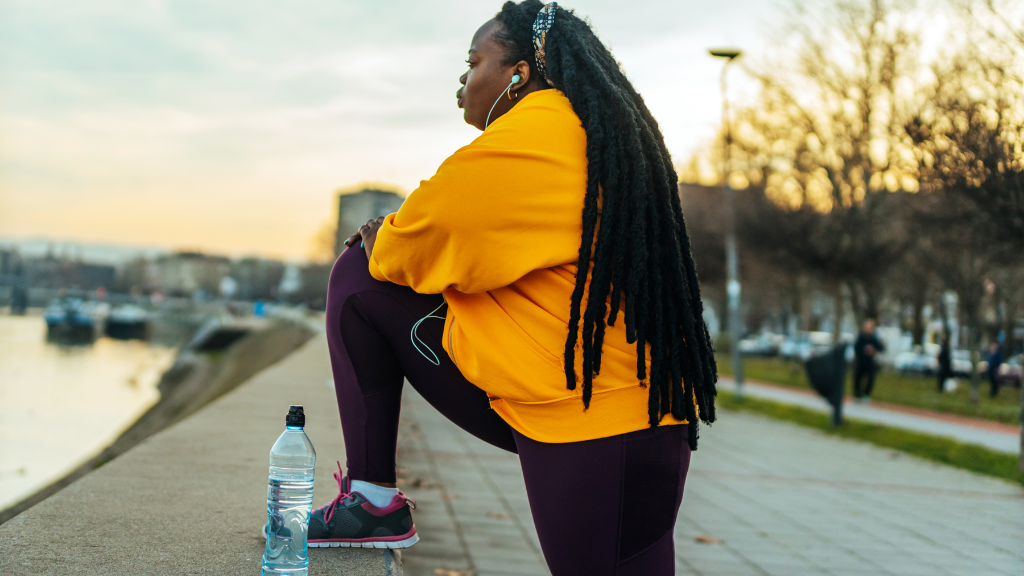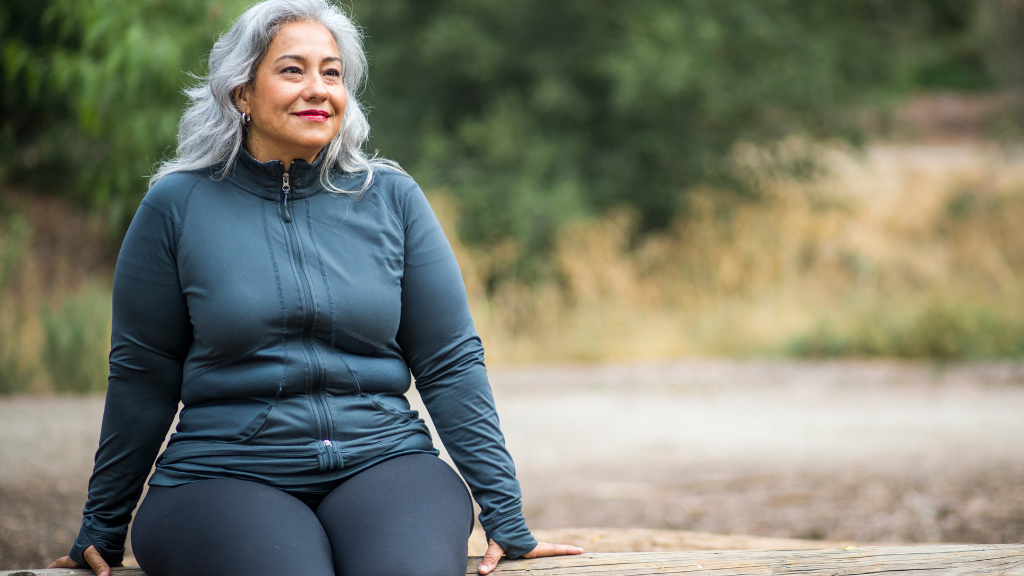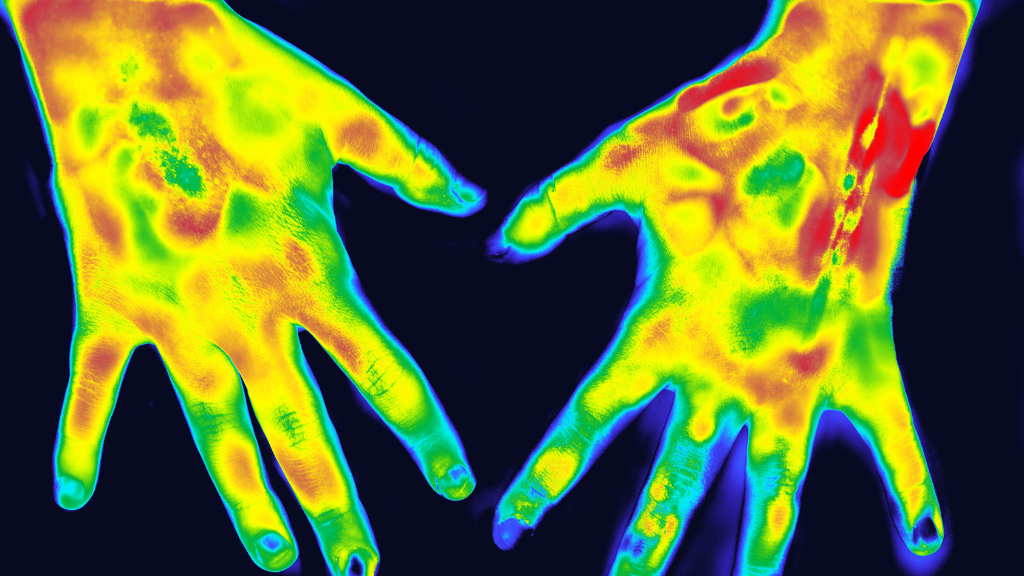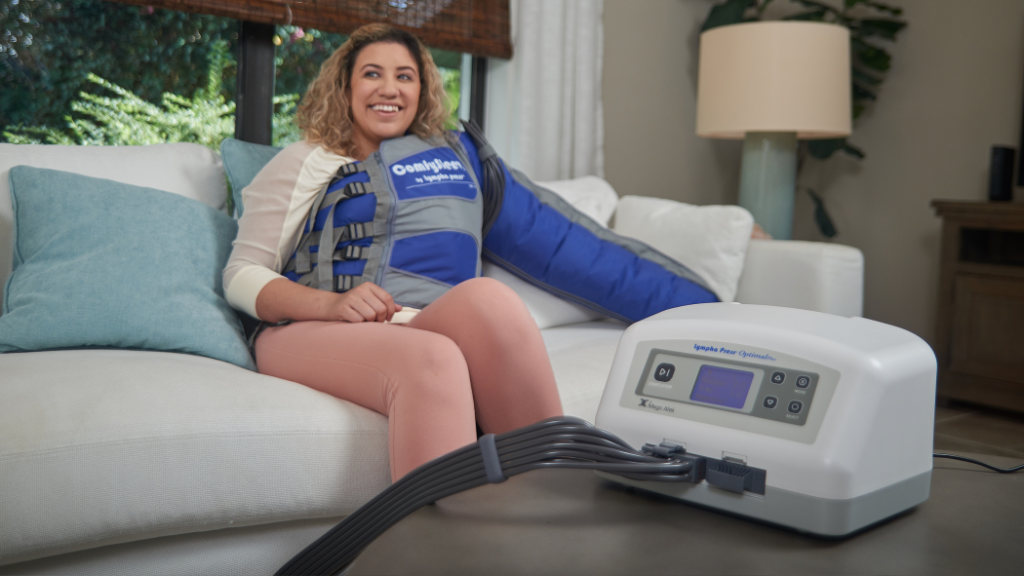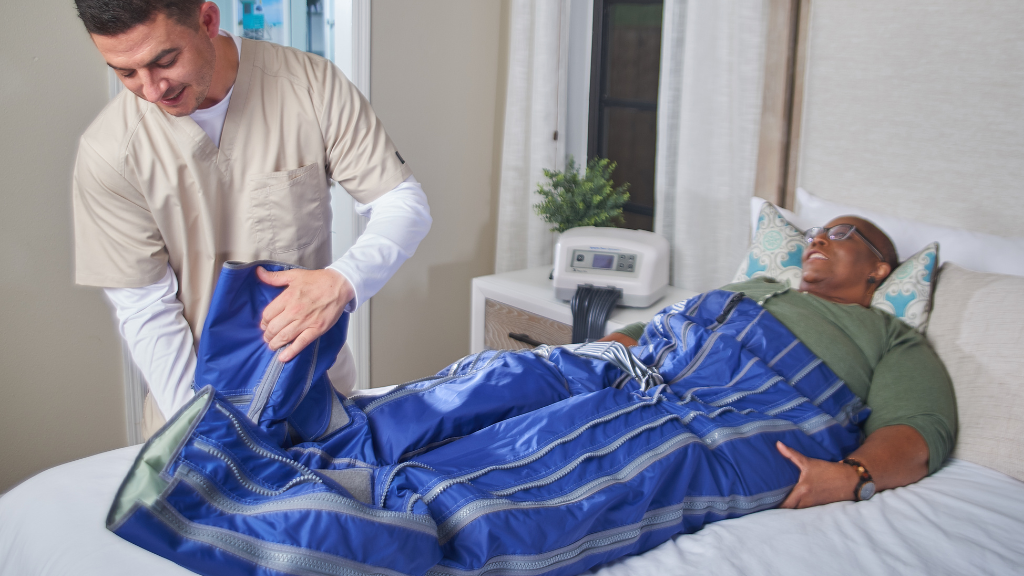No products in the cart.
Explore
Contact Us.
We're ready to help.
Looking for more information, or to be connected with your local representative?
We can help. Fill out our contact form to get started.
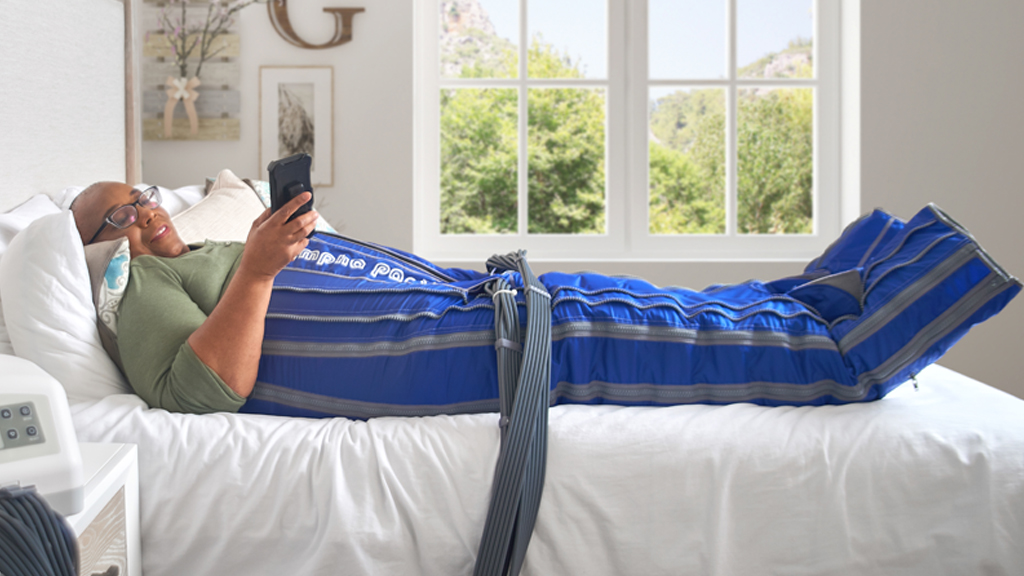
24
Jun
Tools for Lipedema Treatment
By Karen L/ Herbst, M.D., Ph.D.
Lipedema puts a strain on the body and may lead to psychosocial distress, loss of mobility and quality of life. Today, I’d like to provide you with a deeper understanding of lipedema, several related conditions, and helpful tools we can use for treatment.
Lipedema affects almost exclusively women and impacts approximately 11% of the female population. There are three stages of lipedema and the earliest stage, known as Stage 1, is fairly difficult to detect because it involves very small nodules of fat under the skin.
As a woman enters Stage 2 lipedema, she’s more likely to notice the condition and begin seeking a diagnosis. Her weight is increasing, and the texture of her lower body’s skin is changing, even if she leads an overall healthy lifestyle. She may have pearl-like to walnut-size fatty masses in the skin with a fluffy and mattress-like texture. This is due to the underlying fat nodules.
In Stage 3 lipedema, fibrosis is developing around the fat cells and fat lobules. This stage of lipedema frequently involves a distinctive and noticeable cuff of fatty tissue around the joints especially the ankle and/or wrists. In addition to fat, lipedema is composed of fluid and fibrosis, which I’ll discuss more below.
Why Stage 3 Lipedema Is Special
I view women who reach Stage 3 lipedema as quite special and unique. We need to understand their Stage 3 lipedema in terms of its interrelationship with Stage 2 and Stage 1 lipedema but also independently. Women with Stage 3 lipedema likely have a change in their genetic material (genes) that causes a severe loss of elasticity in their tissue. This means that their tissue can continue to expand without restraint even to the point where it folds over and forms hanging lobules. Without the changes in their genes, it is unlikely for a woman with Stage 1 or Stage 2 lipedema to progress to Stage 3 lipedema. The lobules present in the tissue of women with Stage 3 lipedema can inhibit blood flow and lymphatic flow through the tissue and thereby greatly increase the risk for the development of lymphedema. Prior to developing lymphedema, a woman with lipedema has fluid in her tissue; it is just not free flowing as in lymphedema but is bound up as a gel in the tissue. The word “lipedema” means fluid in the fat, which is actually controversial. There are still some doctors who don’t believe fluid exists in the lipedema fat tissue, which is what inspires me to spread awareness and education about this issue.
Resistant Lipedema Fat
Lipedema is highly resistant to dieting, exercise, and bariatric surgery. This is because it has a large amount of fluid plus fibrosis, which is thick and hardened tissue. The fibrosis, combined with the fat, prevents women with lipedema from seeing the benefits of bariatric surgery.
Normally, women who have obesity can lose obesity-related fat through bariatric surgery and may have excellent results. However, lipedema fat is much more resistant to surgery and will likely remain after the procedure, to the patient’s great disappointment.
For example, a young woman who has lipedema may have bariatric surgery, and when you compare pre-bariatric surgery photos with post-surgery photos, you’ll see a loss of abdominal fat and calf fat, but her thighs remain about the same. This means she holds most of her lipedema fat in her thighs, which will likely remain quite resistant to both weight loss efforts and surgery.
Understanding Edema and Lymphedema
Edema is the swelling of the soft tissues caused by increased interstitial fluid. This swelling can be generalized or localized, and it results in increased fluid pressure in the capillary or post-capillary venules and increased plasma proteins.
Lymphedema is a severe condition that involves obstruction in the lymphatic system. Within the lymphatics, fluid moves from the capillary through the interstitium and out the lymphatic vessels within the interstitial space. Proteoglycans and glycosaminoglycans in the interstitial space are found between collagen and elastic fibers, and when bound with sodium and water, form a gel-like structure..
Normally, our bodies can manage their water and sodium balance to hydrate the skin and provide a soft feel to our fat tissue. However, in someone with lipedema, these bodily processes don’t function optimally. Tiny cells known as fibroblasts, which normally hold the collagen fiber matrix together, release their grip and allow swelling to occur especially when inflammation is present in the tissue.
This gel inhibits flow through the tissue and can result in edema or, in extreme cases, lymphedema. This is a severe imbalance involving pressure, fluid, fibrosis, and fat.
Managing Your Condition at Home
Whether a patient has edema, lymphedema, or lipedema, and no matter which stage it’s in, most will seek a diagnosis and treatment options. My patients are always eager to find relief.
Below is a list of potential treatment options. Patients should always consult with their own doctor before starting a new regimen.
Low-Salt Diet
Sodium causes enhanced capillary filtration, creates more interstitial fluid flow, and stimulates interstitial matrix production. This may worsen lipedema and other conditions.
Unfortunately, diets and weight-loss plans rarely make a significant impact for lipedema patients due to the somewhat intractable trio of fat, fibrosis, and fluid. Also, some women have other conditions for which sodium restriction is not advised including postural orthostatic tachycardia syndrome (POTS). A low-salt diet can be beneficial, but each person should follow their own doctor’s advice in terms of limiting their salt intake.
Hormones, Food, and Supplements
Unless absolutely necessary, avoid taking high-dose or prolonged oral corticosteroids. Corticosteroids mimic the hormone cortisol in the body and can worsen swelling. If taking a corticosteroid is a must, employ stress management techniques, such as breathing methods, because stress maintains a chronically high level of cortisol in the body and activates the sympathetic nervous system.
Fresh, anti-inflammatory foods should be a priority for lipedema management.1 Avoid eating too many processed foods, which are typically high in sodium and preservatives, and processed carbohydrates.2 Also, anti-inflammatory supplements may also be helpful, as long as the patient responds well to them.3 These include Diosmin and Vitamin C.4
Exercise and Movement
For people with lipedema, certain forms of vigorous exercise aren’t always enjoyable and some forms can be excruciating due to the pain felt in the lipedema tissue. However, body movement is essential to create much-needed negative interstitial fluid pressure that draws fluid into the tissue and pushes fluid out through the lymphatic vessels, and engages the lymphatic pump (muscle) which helps support lymphatic flow.
When the body remains immobilized, the pressure in the interstitial tissue creeps toward zero. By engaging in moderate movement, the person restores the desired negative pressure and benefits their body.
External Forces and Compression
External forces can also create the right pressures within the body. This includes activities like stretching and swimming, plus the use of pneumatic compression pumps and compression garments worn on the body.
Manual therapy from a professional has long been the “gold standard” of care, but it’s often inaccessible for a variety of reasons: expense, lack of health insurance, distance, and so forth. For these reasons, a sequential pneumatic compression pump may be the best option for someone who needs an at-home solution.
Why Compression Devices Are Beneficial
Compression devices use mechanical movement and stretching to do something similar to what manual therapy does. There is evidence that mechanical stretching prevents pre-adipocytes from becoming fat cells. Under external forces, these cells spend more time healing than on triglyceride storage.
A compression pump can increase fluid flux into the capillary, reduce inflammation, and promote the health of the interstitial space. When using a pump, the patient should make sure to treat the following four essential areas where fluid is at risk of accumulating:
- Medial knee
- Medial elbow
- Inner thigh
- Abdomen
Please note that a pump must be used properly to get the best results and avoid counterproductive fluid movement. For example, don’t focus only on the lower legs because this will simply move fluid into other undesirable areas like the inner thigh and abdomen.
Take a comprehensive approach to get the most benefit from the device. In my work with patients, I have seen positive results5 from combining the following activities with pump use:
- Eating anti-inflammatory, enzyme-rich foods
- Using compression garments
- Getting moderate daily exercise, including walking
- Elevation of the legs
- Whole-body vibration
- Deep-tissue treatment with the hands
- Using gua sha tools (tools that help deepen treatment in the tissue)
- Bouncing up and down while standing or on a trampoline
- Engaging in squeeze-and-release tissue activities, including yoga
- The dead cat shake: While lying down or standing, shake the arms and legs.
Helping Patients Help Themselves
Early detection and treatment can make a huge difference for people with the conditions we’ve covered in this article. This is why I urge patients to take action as early as possible to prevent their condition from transitioning to a more severe stage.
I encourage my patients to use compression garments and sequential pneumatic compression pumps regularly, in addition to the other activities listed above. Doing so provides measurable health benefits. Plus, it gives people a sense of control over their condition, which in itself can vastly improve their outlook and quality of life.
About Dr. Herbst
Karen Herbst, M.D., Ph.D. is board-certified in endocrinology and has held faculty positions at Martin Luther King Drew Medical Center/UCLA, VA San Diego Health Care System/UCSD, and the University of Arizona. She won the Lifetime Achievement Award from Tucson Business and was named one of America’s top physicians. You may recognize her as the research physician on Mystery Diagnosis, featuring a man with Dercum’s Disease (The Man with 1000 Lumps). Now retired, Dr. Herbst is currently pursuing a career in private practice and research where she is head of the standard of care committee for lipedema in the US6 and working with the CDC on ICD-10 codes for lipedema.
About Lympha Press
For more than 40 years, Lympha Press has been a proud provider of top-quality compression pump home therapy equipment, including The Lympha Press Optimal Ⓡ Plus, which was the first pneumatic compression device cleared by the FDA for the treatment of lipedema in the United States. To learn more, please view the product gallery or call 1-800-734-0422.
References
- Chuck Ehrlich, Emily Iker, MD, Karen Louise Herbst, Ph.D., MD, Linda-Anne Kahn, CMT, CLT-LANA, Dorothy D. Sears, Ph.D., Mandy Kenyon, MS, RD, CSSD, and Elizabeth McMahon, Ph.D., Lymphedema and Lipedema Nutrition Guide, LymphNotes.com, accessed June 1, 2020, http://www.lymphnotes.com/nutrition.php.
- Deanna M. Minich, A Review of the Science of Colorful, Plant-Based Food and Practical Strategies for “Eating the Rainbow,” Hindawi Journal of Nutrition and Metabolism, Hindawi.com, accessed June 1, 2020, https://www.hindawi.com/journals/jnme/2019/2125070/.
- Tanaka H, Lund T, Wiig H, Reed RK, Yukioka T, Matsuda H et al. High dose vitamin C counteracts the negative interstitial fluid hydrostatic pressure and early edema generation in thermally injured rats. Burns 1999;25:569–574.
- McGregor GP, Biesalski HK. Rationale and impact of vitamin C in clinical nutrition. Curr Opin Clin Nutr Metab Care 2006; 9: 697-703. doi: 610.1097/1001.mco.0000247478.0000279779.0000247478f.
- Karen Herbst, accessed May 10, 2021, Tools for Lipedema Treatment During the COVID-19 Pandemic, https://lymphaticnetwork.org/news-events/tools-for-lipedema-during-the-covid-19-pandemic.
- Herbst KL, Kahn LA, Iker E, Ehrlich C, Wright T, McHutchison L, Schwartz J, Sleigh M, Donahue PM, Lisson KH, Faris T, Miller J, Lontok E, Schwartz MS, Dean SM, Bartholomew JR, Armour P, Correa-Perez M, Pennings N, Wallace EL, Larson E. Standard of care for lipedema in the United States. Phlebology. 2021 May 28:2683555211015887. doi: 10.1177/02683555211015887. Epub ahead of print. PMID: 34049453.
Share this post
Related Posts...
Explore
Contact Us.
We're ready to help.
Looking for more information, or to be connected with your local representative?
We can help. Fill out our contact form to get started.
